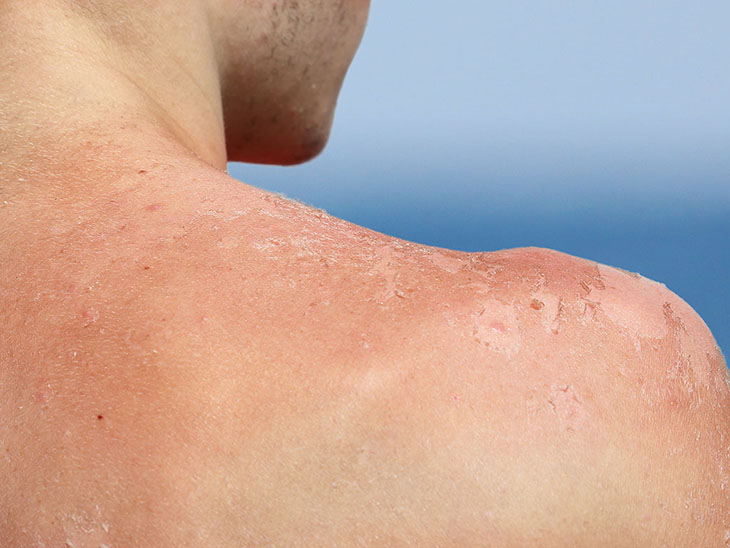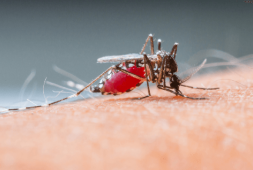
Khloé Kardashian recently underwent a procedure to remove a precancerous melanoma tumor from her face, and during her recovery, she wore facial bandages for several months. However, it’s important to recognize that she is not alone in this battle. Skin cancer affects millions of people worldwide each year, making it a significant health concern.
Contrary to popular belief, skin cancer can strike anyone, regardless of their skin color or age. While excessive exposure to ultraviolet (UV) rays from the sun and tanning beds remains the primary cause, other factors like family history can also contribute to an increased risk of developing skin cancer.
In honor of Melanoma Monday, Marc Hurlbert, PhD, the CEO of the Melanoma Research Alliance (MRA), addresses and dispels ten common misconceptions surrounding skin cancer. He also provides valuable insights on how to reduce the risk of skin cancer and emphasizes the importance of early detection for effective treatment. Staying informed and vigilant can make a significant difference in combating this prevalent and potentially life-threatening condition.
Myth 1: There Is Just 1 Type of Skin Cancer
According to the Centers for Disease Control and Prevention (CDC), among the various types of skin cancer, certain ones carry greater severity than others. The CDC identifies basal and squamous cell carcinomas as the two most prevalent forms.
“There are more than a million [cases] every year, so many that the government doesn’t even track them,” Dr. Hurlbert said.
These types of skin cancers develop within the basal and squamous layers of the skin, while melanoma, a less prevalent form, originates in the melanocytes—the cells responsible for producing pigments. Unlike basal and squamous cell carcinomas, melanoma is notably more severe and invasive. The American Cancer Society reports that it results in approximately 100,000 skin cancer diagnoses each year in the United States.
Myth 2: Melanoma Is Only Mole That Can be Surgically Removed
“It is indeed a fact that all melanoma originates from melanocytes, even those present in moles. However, it is crucial to recognize that melanoma is far more than just a benign mole; neglecting it can have fatal consequences,” emphasized Hurlbert.
When performing a self-screening for skin cancer, Hurlbert recommended following the “ABCDEs of melanoma.” Look for dark spots that exhibit asymmetry and have irregular borders. Melanoma spots tend to undergo changes over time and may display various colors within the lesion. While most melanomas are larger than a pencil eraser, it is essential to remain vigilant as some cases are detected when the lesions are smaller.
“We all know our own bodies better than even our doctors. We should all be aware of the marks on our own bodies,” Hurlbert shared. “You get more of those as you age, but if they’re changing, be screened by a doctor.”
According to Insider, Khloé Kardashian’s precancerous melanoma initially manifested as a bump on her cheek. Initially, she believed it to be a pimple, but when it persisted for seven months, she made the decision to have it biopsied.
“It was way more serious than I anticipated it to be,” Kardashian said in the trailer for Season 3 of the famous reality The Kardashians, a program that follows the lives of her family.
Myth 3: Melanoma Only Appears on the Skin
These spots are not limited to the skin alone. Uncommon variations of melanoma may manifest in other areas, such as the eyes (ocular melanoma) and mucus membranes (mucosal melanoma), particularly in regions like the nose, mouth, or lips.
Myth 4: Skin Cancer Isn’t Dangerous
Skin cancer, particularly melanoma, can be deadly. It needs to be caught early for it to be treatable. “Melanoma has a propensity to spread to other parts of the body,” Hurlbert said. “Anyone diagnosed in the advanced stages, past stage 1, will need surgery and immunotherapy.”
Immunotherapies have become a prominent treatment option for various cancer types, with leukemia and melanoma being among the first to receive approval from the U.S. Food and Drug Administration (FDA). Unlike traditional chemotherapy, which employs toxic agents to target rapidly dividing tumor cells, immunotherapies adopt a different approach. They instruct a patient’s immune system to recognize and combat cancer cells much like it does against viruses.
In certain cases, basal and squamous cell skin cancers may necessitate radiation therapy following surgery. This additional treatment aims to eradicate any lingering tumor cells, as recommended by the American Cancer Society.
Myth 5: People With Darker Skin Are Less Prone to Skin Cancer
“People of any race or skin color can get skin cancer from UV, period,” Hurlbert explained. He also added that skin cancer may be overlooked more often for those with darker-colored skin.
As per the Dartmouth Geisel School of Medicine, the likelihood of Black patients receiving a late-stage melanoma diagnosis is over three times higher compared to white patients.
Additionally, individuals with darker skin are affected by uncommon subtypes of melanoma that are not solely linked to UV damage. Among these, there is a higher incidence of a rare form called acral lentiginous melanoma in communities of color. This type of melanoma appears on the palms of the hands, soles of the feet, and in the nail beds.
Myth 6: Melanoma Only Happens When You’ve Had Years Exposed to the Sun and Burns
According to the Skin Cancer Foundation, experiencing a single blistering sunburn during childhood or adolescence increases an individual’s likelihood of developing melanoma later in life by more than two times.
“One sunburn is one sunburn too many, and can damage your skin cells and potentially increase your risk of melanoma,” Hurlbert said. He also explained how several layers of severe sunburns and prolonged UV exposure could be even worse because this is when sun damage builds up. Still, just one sunburn can have a long-term impact.
Myth 7: A Base Tan From a Tanning Bed Could Prevent Sunburns and Even Skin Cancer
According to Hurlbert, no kind of tan is considered healthy. “A tan is actually a sign that your skin is in distress. It’s the skin’s damage or stress response to UV exposure,” he said.
According to the Skin Cancer Foundation, sun exposure can lead to cellular damage, increasing the risk of skin cancer, even if you don’t experience sunburn. It’s important to note that having a tan does not offer protection against sunburn. The University of Central Florida has conducted studies revealing that a base tan provides approximately the same level of UV protection as sunscreen with an SPF of 3 or less.
Myth 8: Makeup Serves as Protection Your Skin Needs
“It’s great that some makeups and foundations have SPF in them, but it’s not enough,” Hurlbert said. “You really want to put on SPF 30 or higher, and apply [your makeup], and then reapply that every couple of hours.”
Applying sunscreen repeatedly is crucial, often overlooked in one’s makeup regimen. It doesn’t matter how dark your skin is; everyone must wear sunscreen and refrain from being outdoors during peak sun hours throughout the year, he emphasized.
Myth 9: You Need to Use Sunscreen Only Outdoors and For Long Periods of Time, Like Going Out for a Swim to the Beach or Pool
Hurlbert emphasized that sunscreen ought to be incorporated into everyone’s morning routine, irrespective of whether they anticipate spending most of the day indoors.
“You may be outside during your commute, and you can get sun exposure through windows while you’re inside, too,” he said.
Additionally, he advised that when spending an extended period outdoors, it is essential to reapply sunscreen every two hours.
Myth 10: Only Exposure to the UV Rays Causes Skin Cancer
While UV exposure is the main culprit behind skin cancer, it isn’t the only enemy.
“Skin cancer can run in families. We haven’t yet identified the inherited genetics of melanoma, but there are hints of what genes may be involved,” Hurlbert said. He further mentioned that family history tends to play a more significant role in the development of skin cancer among teenagers and younger adults.
As for the uncommon subtypes of skin cancer that impact the eyes, mucosa, and the palms of hands and soles of feet, their occurrence is typically unrelated to UV exposure, according to his statement. Additionally, the CDC guideline states that having numerous moles, especially certain types, also elevates the risk of skin cancer.



